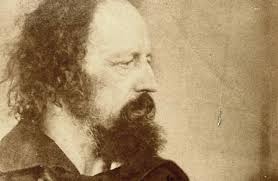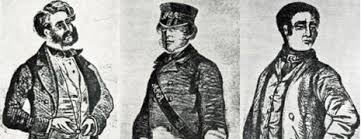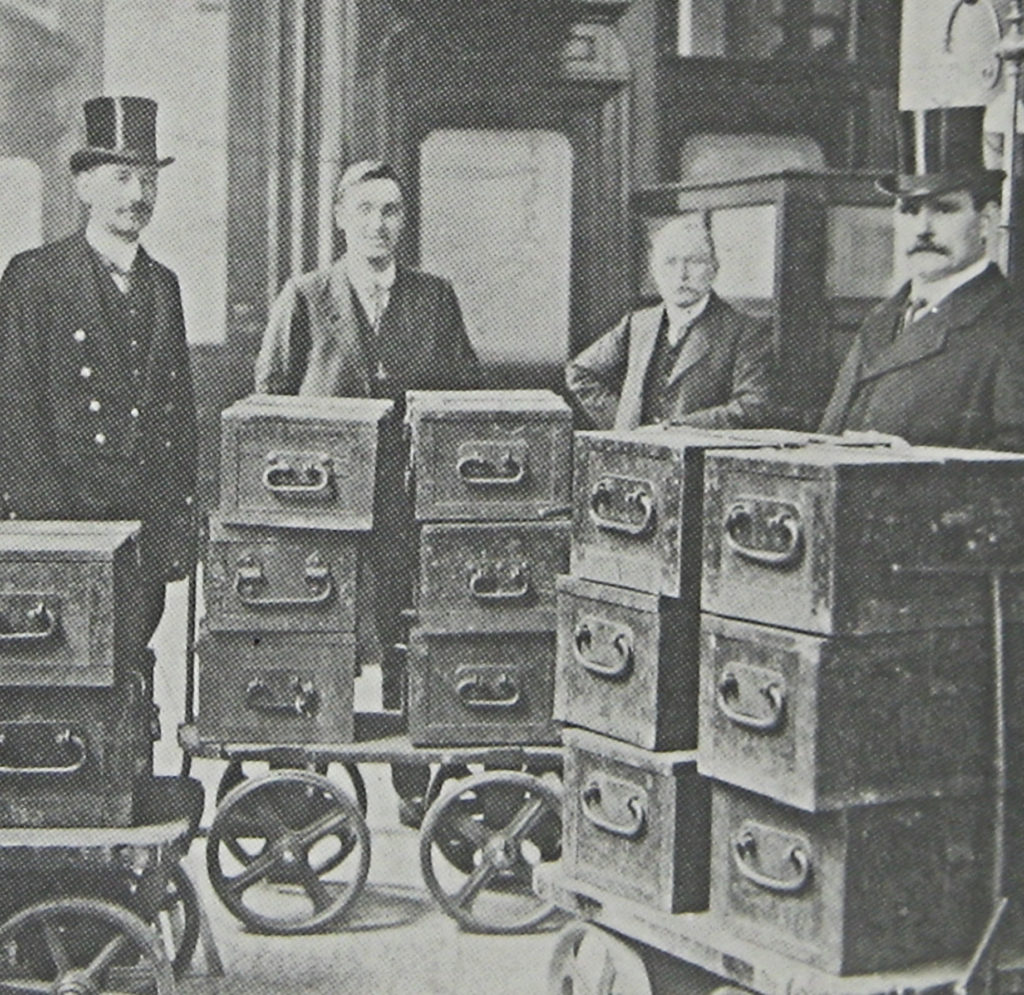Hello Again,
 When wandering through the Arcade have you ever stopped to consider how old the items that are on display really are? Well, if you scratch the surface you will find things dating back thousands of years. But I am going to concentrate on one year, 1855 to be exact.
When wandering through the Arcade have you ever stopped to consider how old the items that are on display really are? Well, if you scratch the surface you will find things dating back thousands of years. But I am going to concentrate on one year, 1855 to be exact.
How many items did you see that were in existence in 1855?
But why 1855? Because that was the year of the Great Gold Robbery but more of that later.
Do you realise that the much loved newspaper, The Daily Telegraph began publication in 1855 and that Tennyson’s first collection of poems Maud and Other Poems was also published in 1855.
If you look sharply around the Arcade it is likely that you will find a book of Tennyson’s poetry (including Maud) and you only have to walk under the railway bridge to pick up a copy of the Daily Telegraph from Smiths.
Outside of Smiths, you will find a rather nice red pillar box (it was one of the lucky ones that was not painted gold) and yes the first pillar boxes were installed in London in 1855. In was the year that Sevastopol fell to the British and their allies during the dreadful Crimean War. Also far away, the explorer David Livingstone discovered the Victoria Falls in Africa in 1855.
But let’s go back to the train robbery of 1855 which is a robbery that has always interested me not only because I have connections with Kent, but also as it was a well planned and executed robbery in which no violence was used (unlike the 1963 Great Train Robbery). I think all of us have a soft spot for criminals whose ingenuity and precise planning nets them their rewards (even though we do not admit it to ourselves).
I was in The South of France in July 1976 when the memorable heist at the Societe Generale in Nice took place (it was not me guv honest).
Although details were scarce at the time but as the information leaked out, the more I began to admire Albert Spaggiari and his gang of sewer rats (they drilled into the supposedly impenetrable vault from nearby sewers).
I remember Nice Matin noting that sans armes, ni haine, ni violence (without weapons, nor hatred, nor violence) had been daubed on the walls of the vault and admiring the sheer style of the criminals.

This said, in later years I became aware of the OAS (Organisation armée secrète) connections to the robbery which tempered my admiration a little.
But all good things end and Albert and his entire gang were betrayed by the girlfriend of one of the thieves who turned the gang in. But that was not the end of things as Albert escaped during the case hearings and remained free for the rest of his days. This would have been the fate of the 1855 gang but as normal, greed and stupidity betrayed them and they all received their free tickets to Australia.
In short, on the night of the 15th of May 1855 three boxes containing gold were delivered to London Bridge Railway Station and they were placed in the guards van. They were sealed and bound with iron bars and placed in a safe secured by Chubb locks. The keys to these locks were held by trusted and confidential employees of the railway company as well as the captains of the South Eastern Railway boats. So far so good, it could not go wrong or could it?
Well, when the boxes were weighted at Boulogne after being taken out of the safe they weighed some 40lb (18kg) less than they should have done.
Despite this our French cousins put the boxes back on the train for transportation to Paris where as per procedures they were opened. It was then found that lead shot has been substituted for the gold. It was obvious that the robbery had not taken place between Boulogne and Paris due to the identical weight records.
After some investigation, it was found that the robbery could not have taken place on the channel crossing from England to France but had occurred between London Bridge and Folkestone.
The robbery was made possible by the duplication of keys and the strict observation of the transportation procedures by the gang, some of whom were dishonest railway employees. There are a number of books on the subject and what strikes one immediately, is the sheer ingenuity of the crime which had been meticulously planned down to the final detail.

But as it always does, human frailties got in the way. Edward Agar who was one of the robbers was arrested for passing a false cheque (it appears that he was set up by a rival). He was sentenced to penal transportation to Australia and whilst waiting in Pentonville, he wrote a woman named Fanny Kay who was the mother of his illegitimate child noting that another of the gang a William Pierce should have paid her £7000 to keep her whilst her boyfriend was Down Under. In fact, Pierce became greedy and gave poor Fanny nothing at all. Fanny and later Agar related the full details of the robbery to the authorities.
Apart from Edward Agar and William Pierce, the gang consisted of Jeremy Forsyth, James Burgess and William Tester whose names have almost been forgotten in the mists of history. Some of the robbers were sentenced to transportation (which was harsh but an example was made of them as they had been railway employees) whilst the man (Pierce) whose greed contributed to the gangs downfall received only two years for larceny.
Unlike the 1963 robbery, their names do not roll off of the tongue (Ronnie, Buster & all) but I find its history very fascinating as it took place in and around Dover and Folkestone both of which I know well. There was a movie made in 1978 called The First Great Train Robbery which starred Sean Connery and Donald Sutherland. Although this enjoyable romp was a touch liberal with the true facts as Agar and Pierce escape at the end of the movie aided by Lesley Anne Down.
But what has this all to do with the Arcade you may ask and why did I pinpoint just one year just over one hundred and sixty years ago? The answer is simple, I found one of the many books on the subject for sale in the book section near Rafters Café in the Arcade. The book was called Great Train Crimes and was written by Jonathan Oates and although it does not concentrate solely on the 1855 crime, it is a good read especially if you travel on the 4.50 out of Paddington with your friend Agatha each day.
Although I have made light of certain robberies in this article, in reality it is not much fun for the victims of the crime and one must remember that.
But rather like studying famous battles or celebrated murders, there is a morbid fascination in reading about subjects such as these. One should not enjoy reading about these things but we do and that sadly, is a fact of life. Most of us are guilty of it.
I admired the ingenuity of the 1855 train robbers and although they were the bad guys in a sense, you wished them well after they returned from Australia. As far as I can see, two of them went to Ceylon and faded into history whilst the others lived out their lives in quiet obscurity.
If you want to study the subject further there are a number of books on the robbery (including the one I have mentioned). You might find one of these books in the Arcade behind the Keats or next to the Rubaiyat. Who knows, you may find one at a Christmas Fair hiding on the Santa’s Stall.
But returning to my original thought, just consider the year 1855 (or any other year you might want to choose) the next time you are in the Arcade.
It might just enhance your enjoyment.
Happy Hunting
Stuart Miller-Osborne
 When wandering through the Arcade have you ever stopped to consider how old the items that are on display really are? Well, if you scratch the surface you will find things dating back thousands of years. But I am going to concentrate on one year, 1855 to be exact.
When wandering through the Arcade have you ever stopped to consider how old the items that are on display really are? Well, if you scratch the surface you will find things dating back thousands of years. But I am going to concentrate on one year, 1855 to be exact.

